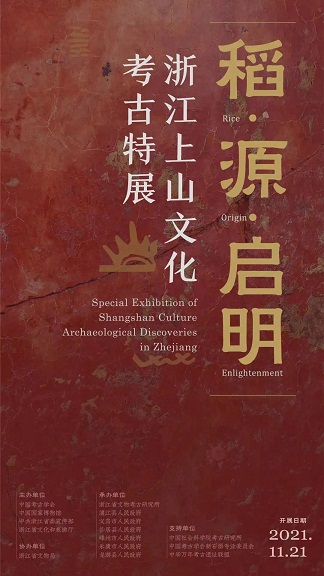
A special exhibition named "Rice, origin, enlightenment of Shangshan Cultural Archaeology in Zhejiang" is currently at the National Museum of China in Beijing. [Photo/WeChat account: jhfabu]
An exhibition focusing on the Shangshan culture archaeological discoveries – made in East China's Zhejiang province – opened on Nov 21 at the national museum located in Beijing.
The exhibition displays nearly 200 cultural relics from the early, middle and late phases of Shangshan culture, including the earliest carbonized rice in China, stone head sculptures and the earliest colored pottery.
Also on display are tomb and village relics and other important symbolic remains of Shangshan culture.
Dating back to around 11,000 years ago, Shangshan culture is known to be the earliest Neolithic civilization ever discovered in Zhejiang. Its artifacts were initially excavated in the year 2000 in Huangzhai town, in Pujiang county, administered by Jinhua city.
Since then, 20 Shangshan relics sites have been discovered, confirming its role as the source of Chinese village farming culture, with major significance for the world's agricultural civilization.
The exhibition will run for two months.